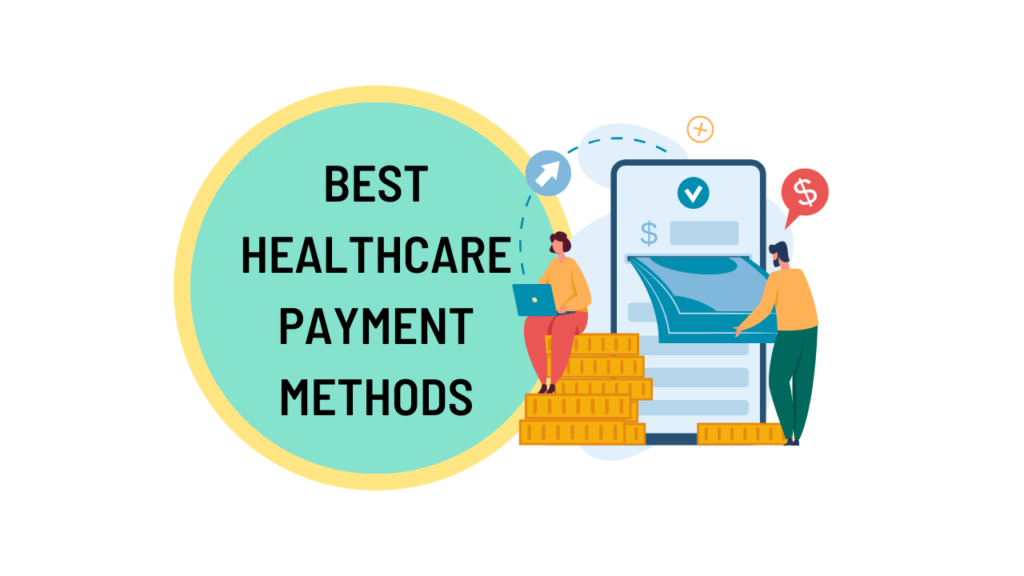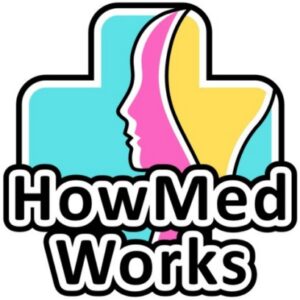
Paying for healthcare expenses can be a challenge, especially if you are dealing with unexpected medical bills or are on a tight budget. There are several payment options available, each with its own pros and cons.
In this article, we’ll explore the best payment methods for healthcare expenses, including health insurance, healthcare credit cards, flexible spending accounts (FSAs), health savings accounts (HSAs), and health reimbursement arrangements (HRAs). We’ll discuss the costs, benefits, and drawbacks of each payment method so you can make an informed decision about which one is right for you.
Table of Contents
Payment Method #1: Health Insurance
The first step in finding the best payment methods for healthcare is to understand your insurance coverage. This will help you to know what services and treatments are covered by your insurance, and it will also enable you to determine how much you will have to pay out-of-pocket for healthcare services.
You can start by reviewing your insurance policy or by contacting your insurance provider to get more information. Many plans even have other supplemental options to help further cover out-of-pocket healthcare expenses, which we’ll discuss shortly. These add-ons have the potential to save you even more money on medical expenses in the long-run compared to a typical plan alone.
Bonus Information: There are lots of health insurance options out there, both private and public. According to the U.S. Census Bureau, the majority of people (66.0%
) are covered under private health insurance – either through work, a spouse, or parent(s). Meanwhile, 35.7%
of Americans have public health insurance plans – mainly through Medicare or Medicaid.
For more help on understanding the different health insurance options available, be sure to check out my “The Ultimate Guide to Choosing the Right Health Insurance Plan
” article! There, I do a thorough breakdown of everything you need to know when searching for the right insurance plan. 🙂
Payment Method #2: Health Savings Account (HSA)
A health savings account (HSA) is a type of tax-advantaged savings account that can be used to pay for qualifying medical expenses (e.g. deductibles, copays, prescription drugs). HSAs are often paired with high-deductible health plans (HDHPs) as a way to save for healthcare costs.
Important Note: To be eligible to contribute to an HSA, an individual must be enrolled in an HDHP.
One of the main benefits of an HSA is that the money you contribute to the account is tax-deductible, which can lower your taxable income and reduce the amount of taxes you owe. In addition, the money in your HSA grows tax-free. You can also use your HSA to pay for certain types of long-term care insurance and certain types of Medicare premiums.
HSAs do not have a “use it or lose it” rule. This means that you can save and carry over your unused HSA funds from year to year, and you can use them to pay for medical expenses at any time in the future. This makes HSAs a good option for saving for future healthcare expenses, such as retirement. 🙂
Payment Method #3: Health Reimbursement Arrangement (HRA)
A health reimbursement arrangement (HRA) is a type of employer-funded healthcare benefit plan that reimburses employees for out-of-pocket medical expenses. HRAs are funded entirely by the employer and are not considered taxable income for the employee.
Important Note: HRAs require enrollment
in a healthcare plan. For Qualified Small Employer HRAs (QSEHRAs) offered by some small employers, you’ll still need to enroll in minimum essential coverage (MEC)
.
Unlike HSAs however, you do not need to have a specific type of health insurance plan (e.g. HDHP) to be eligible for an HRA. Under specific circumstances, you can have an HRA and HSA
at the same time.
HRAs are typically used to supplement other types of healthcare coverage, such as a group health insurance plan. The employer sets aside a certain amount of money in an HRA on behalf of each employee, and the employee can then use this money to pay for eligible medical expenses. The employer determines which expenses are eligible for reimbursement.
One advantage of an HRA is that it allows the employer to tailor the coverage to the specific needs of their employees and their families. For example, an employer may decide to cover certain types of preventive care or specific medical treatments, while excluding others. HRAs can also be a useful tool for employers to control healthcare costs, since the employer sets the budget for the HRA and the employee is only reimbursed for expenses up to the available balance in the HRA.
It’s important to note that HRAs are not portable, meaning that an employee cannot take the remaining balance in their HRA with them if they leave their job. HRA funds belong to the employer, and the employee will forfeit any remaining funds in their HRA when they leave the company.
Payment Method #4: Flexible Spending Account (FSA)
A flexible spending account (FSA) is a type of account that allows you to set aside a portion of your pre-tax income to pay for eligible healthcare expenses. FSAs are often offered by employers as a benefit to their employees. The money that you contribute to an FSA is deducted from your paycheck before taxes are taken out, which can lower your taxable income and reduce the amount of taxes you owe.
Important Note: While it can be beneficial, you do not need to have a health insurance plan to have a flexible spending account (FSA), as the two are separate.
You cannot have an FSA and HSA at the same time. However, you can have both an FSA and HRA
.
There are three types of FSAs: Health Care FSA (HCFSA), Limited Expense Health Care FSA (LEX HCFSA), and Dependent Care FSA (DCFSA). An HCFSA can be used to pay for a wide range of healthcare expenses; a LEX HCFSA can only cover certain types of expenses that are specifically defined by the employer and the plan; a DCFSA can be used to pay for eligible expenses related to the care of a qualifying individual, such as a child under the age of 13 or a dependent adult.
related to the care of a qualifying individual, such as a child under the age of 13 or a dependent adult.
It’s important to note that FSAs are “use it or lose it” accounts, which means that any money you contribute to an FSA but don’t use by the end of the plan year will be forfeited. Some employers may offer a grace period or allow you to carry over a limited amount of funds to the next plan year, but it’s generally a good idea to use up your FSA funds before the end of the plan year to avoid losing them.
Payment Method #5: Healthcare Credit Card
In addition to insurance, there are other payment methods that can help you to pay for healthcare. For example, you can use a healthcare credit card, which is a special credit card that offers low interest rates and other benefits for healthcare expenses.
The caveat is that a healthcare credit card can only be used for healthcare expenses and is usually only accepted by a network of participating healthcare providers. So, are healthcare credit cards worth it? This depends on your situation. You’ll definitely want to do some more research on specific cards if this is something that interests you. For some, a regular credit card might be just fine.
Bonus Tip: Shop Around for Providers!
One of the best ways to reduce the cost of healthcare is to shop around for providers who offer the services and treatments you need at a reasonable price. This isn’t a method of payment for healthcare services but rather a way to cut down on medical costs from the get-go.
You can compare the prices of different providers, including hospitals, clinics, and individual doctors and choose the one that offers the best value for your money. If you have insurance, your best bet is to ask your insurance provider for a list of in-network providers, as these providers usually offer lower prices than out-of-network providers.
If you don’t have insurance, community health centers (CHCs) might be a good option. CHCs are a network of federally-funded and non-profit clinics that provide a wide variety of low-cost healthcare services to certain areas, typically underserved communities. CHCs are designed to make medical care more affordable and accessible to uninsured or underinsured groups of patients.
Conclusion
Great job on making it to the end of this article! I know that trying to understand health insurance can be a headache so give yourself a pat on the back. 😀
For more help, you might want to check out my “The 5 Most Common Health Insurance Terms ” article, where I simplify insurance down to what you definitely need to know. (I wish I had this resource when I was first starting to figure out how insurance worked.) See you there! As always, stay healthy and keep learning.
” article, where I simplify insurance down to what you definitely need to know. (I wish I had this resource when I was first starting to figure out how insurance worked.) See you there! As always, stay healthy and keep learning.
